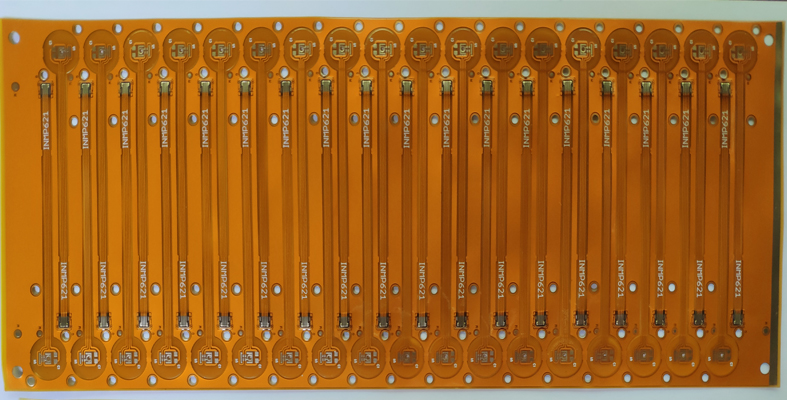There are four main types of flexible circuit constructions, each of which works best in certain applications:
Single-Sided or Single-Layer Flex Circuit:
· Single layer conductor (usually copper) bonded to a dielectric film
· Basic construction allows component connections to one side only
· Chemical etching forms designed circuit patterns, and a polyimide overlay is used to environmentally seal component traces
· Most economical flex circuit construction
· Many applications in automotive lighting, consumer devices and other cost-sensitive, high-volume applications where dynamic flex and thickness profile are required, but circuitry design is not complex
Double-Sided Flex Circuit:
· Two conductor layers of copper, double side bonded to a dielectric film
· Versatile construction can be customized to match physical and electrical application needs by varying copper type and thickness, and dielectric insulator thickness
· Plated thru-holes provide layer conductivity with double-sided solder connection compatibility
· Primarily used in bend-to-install applications due to dynamic flex capabilities provided by thin core construction and rolled-annealed copper conductors
· Cost to manufacture is higher than rigid PCB due to pattern loss and manual assembly of customized designs. Upsides include improved power/ground integration, 3D flex and vibration resistance.
Multi-Layer Flex:
· Three or more conductive layers combining multiple double sided or single sided circuits to create complex interconnection designs with required electrical shielding, often using surface mount technologies
· Higher cost due to multiple lamination steps required to bond layers together
· Specialized fabrication of discontinuous bonding in key areas allows for maximum flexibility while maintaining advanced properties such as impedance and crosstalk control.
· Common applications include connector cabling for medical/industrial applications and antenna flex.
Rigid Flex:
· Traditionally used in military/aerospace applications for highly specialized and demanding needs.
· Recent uses for industrial and commercial designs.
· Hybrid of both rigid and flexible circuitry for applications where extra support is needed in the core board area, but also requiring flexible capability in some areas
· Conductors in both rigid and flex areas are connected via plated thru holes across multiple layers
· Frequently exceeds 15 layers
· Often applied in low volume, mission critical applications due to its high cost and reliability
More details, please refer below:
